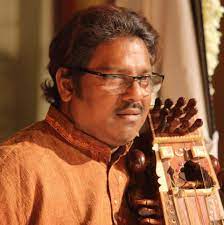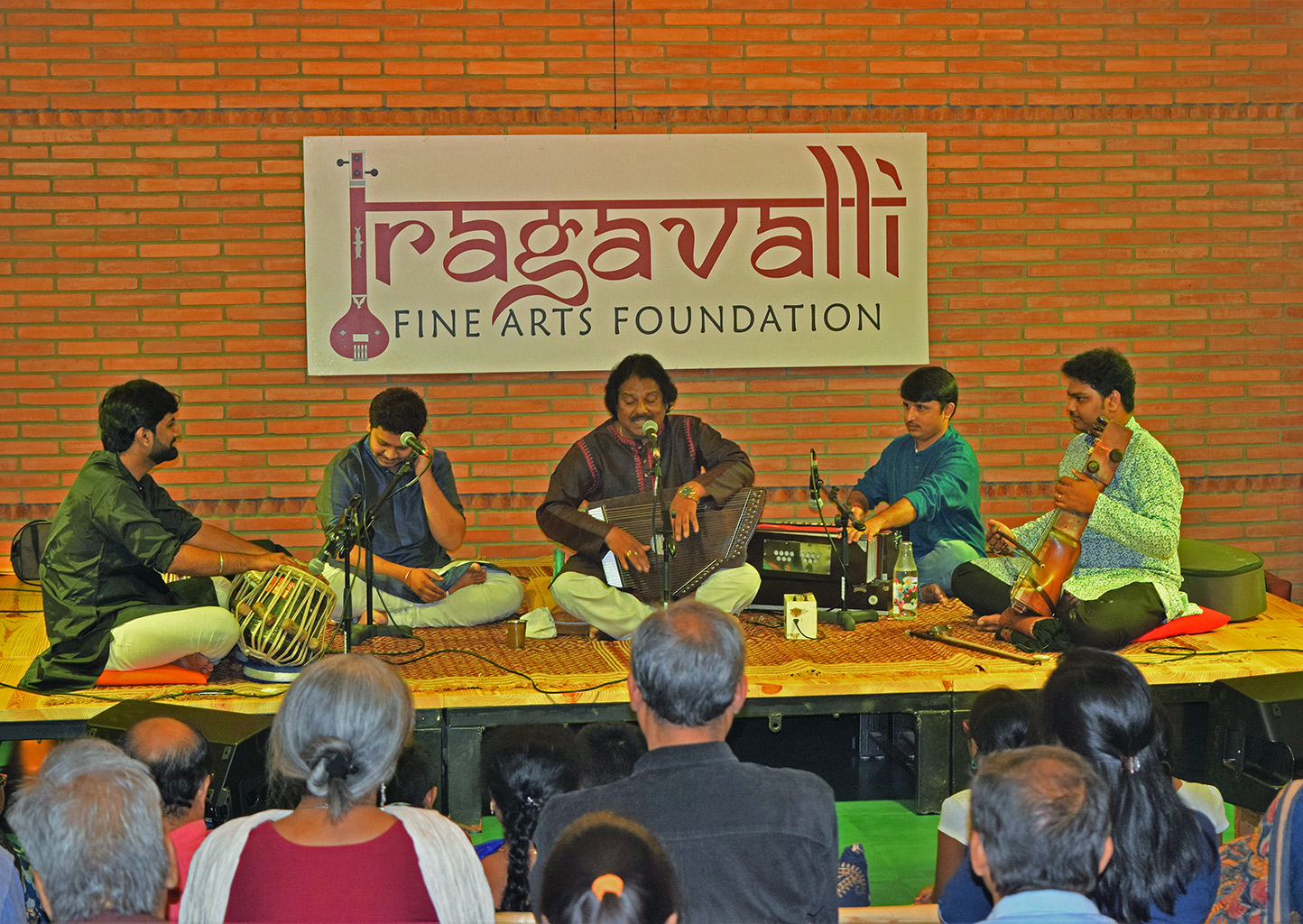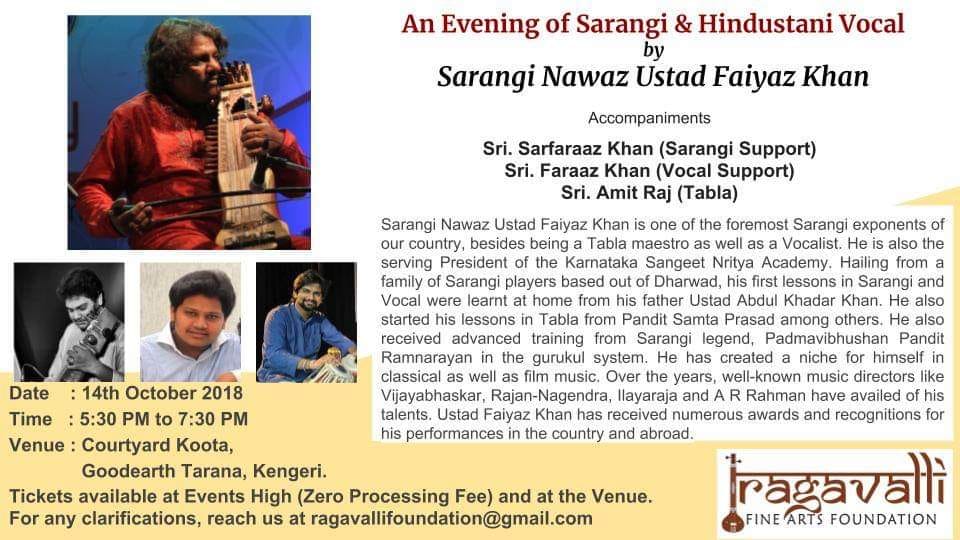Category
Music

Music
Sarangi Nawaz Ustad Faiyaz Khan
Sri Sarfaraaz Khan (Sarangi Support)
Sri Faraaz Khan (Vocal Support)
Sri Amit Raj (Tabla)
October 14th 2018.

An Evening of Sarangi and Hindustani Vocal with Ustad Faiyaz Khan.
The Story of the Sarangi ( From The Hindu –
He is the exponent of an instrument that can reproduce the emotions in a composition since it is closest to the human voice. He belongs to a family, known for its sarangiya tradition, that can be traced back to nine generations. Meet Ustad Faiyaz Khan, who got the sounds of sarangi, rabab and gana in virasat . His father Ustad Mushtaq Abdul Kader Khan served at AIR, Dharwar. Among his forefathers are names such as Sheikh Abdulla Khan, Ustad Nadi Khan, Ghulam Rusul Khan, Ustad Jamal Mohd Khan and Ustad Dastigiree Sahib
“Singing and playing the sarangi were part of my daily routine since childhood. When Baba retired, he was worried that I was still not serious about my music. But after his death, I realised my responsibility in taking forward the family tradition. I went in search of a guru and met the illustrious Pt. Ram Narain and Ustad Lateef Khan of AIR Bhopal. During the training period, my father’s lessons, especially on raga Bhatiyar, kept coming to my mind. It was like he was coaching me from up there,” says the Ustad pointing towards the sky.
There are many stories regarding the origin of sarangi. A folk instrument, it came to be accepted as a classical instrument during the time of Mohammed Shah Rangile. By the 19th century, Sarangi came to be associated with the performances of courtesans. It was a preferred accompanying instrument for singing khayal, thumri and occasionally, dhrupad. Among the legendary sarangi artistes of the 20th century are Bundu Khan, a musician at the Rampur and Indore courts and Ghulam Sabir, Shakur Khan and Gopal Misra.
Sarangi is a small instrument, about two and a quarter ft high, with three main parts — main body and resonator, neck and peg box. It has three main playing strings made of gut and a drone metal string. There are about 36 sympathetic strings which run under the main strings.
The sound is produced by bowing gut strings while the sympathetic strings are suspended to enhance the jawari effect. It has the capacity to imitate the meends as well as other nuances of the human voice.
It also produces sound without a break and as an accompanying instrument allows the singer to pause for breath, filling the gap with appropriate improvisations. There are three ways in which sarangi is used, in unison with the voice, alternating with the voice in interludes or shadowing or imitating the singing.
“Listening is an important aspect of training,” says Faiyaz Khan. He speaks of what he imbibed by watching Ustad Sultan Khan and Ustad Abdul Lateef Khan play the sarangi.
There is hope in the form of young performers. Sarvar Hussain Khan, grandson of Abdul Lateef Khan has grown to be an astute performer. Murad Ali from Delhi and Pt. Ram Narayan’s grandson Harsh Narayan are making waves. Faiyaz Khan’s son Sarfaraz too plays with flourish while the second son Faraz sings and is training in sarod.
Ragavalli Fine Arts Foundation a culmination of our yearning to give something back to classical arts. Through this endeavor, we hope to bring a multitude of classical performing arts to the community, and, in the process, enhance the cultural ambience of our little world. While the primary focus will be on music, our own interests across multiple arts will ensure that other performing arts will find adequate representation. As with all such endeavours, it is the whole-hearted participation of the members of the community that will sustain our efforts. –Ranjani Vasuki and Vasuki HA
